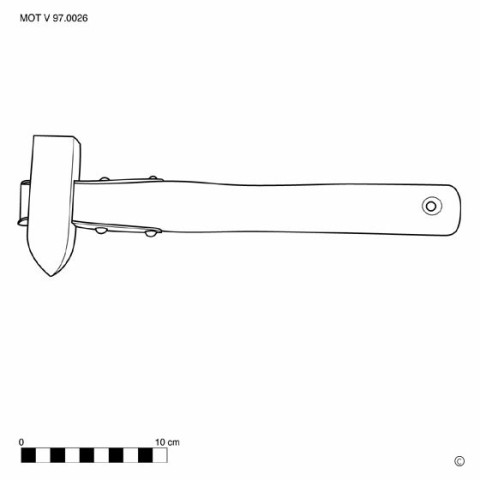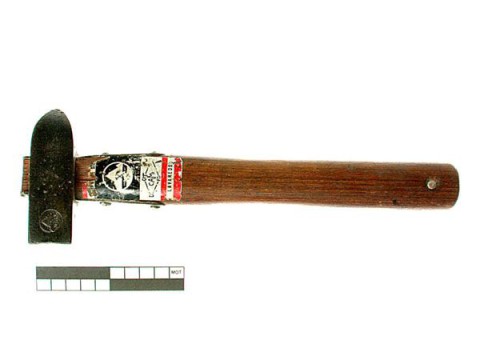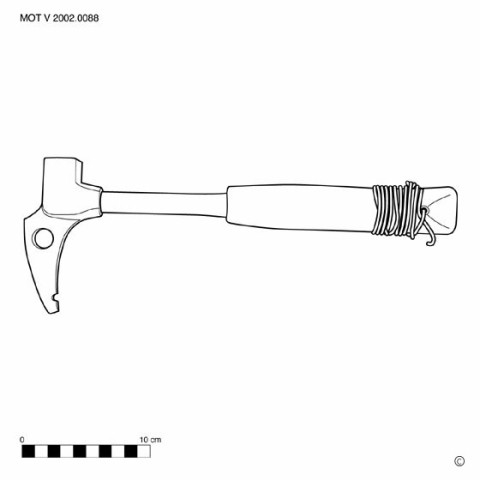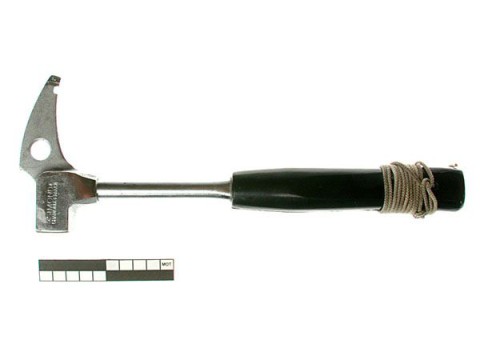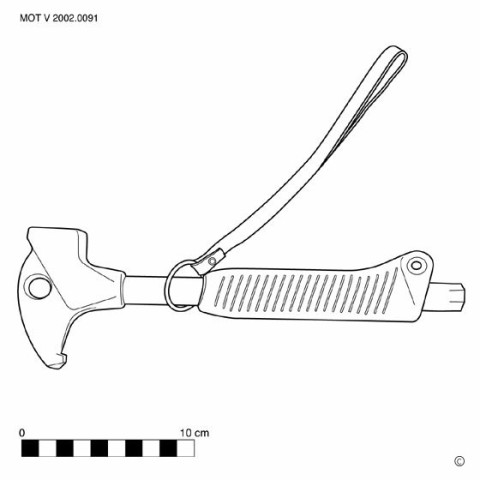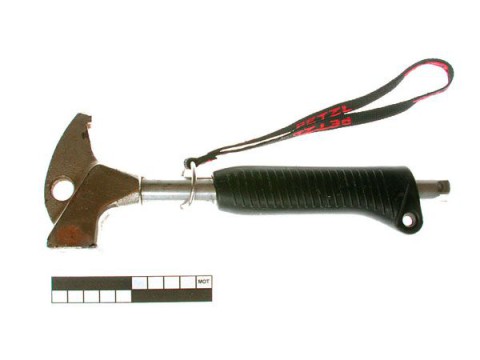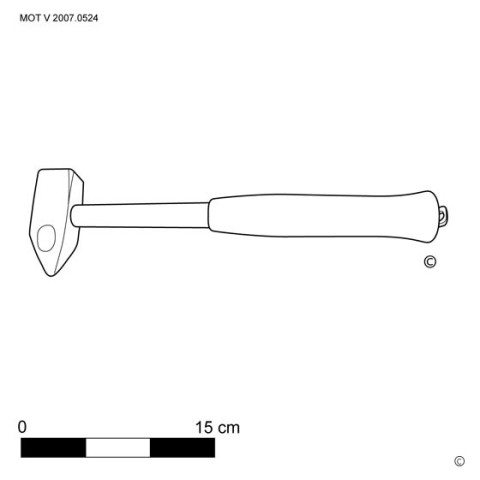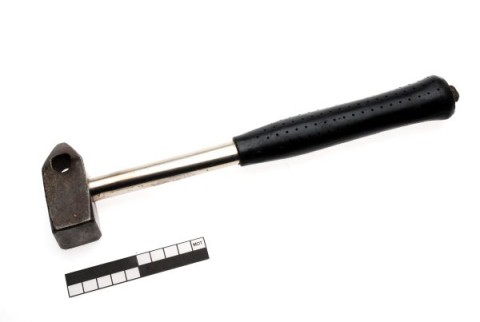Piton hammer
For his safety and, in artificial climbing, to get higher, the first climber puts hooks in the crevices of the rock; the latter removes them. The first work can be done with a light fist. However, pulling out the hooks is sometimes difficult and various hammers have been devised to facilitate this. All weigh about 500-670g and usually consist of a square face to drive the hooks in, and a curved pin with notch that can be inserted into the eye of the hook. The handle then becomes the power arm of a lever of the first kind, like a claw hammer. Sometimes there is also a hole in the working part, where a carabiner can be picked up. By forming a chain of three carabiners, the last of which is inserted into the eye of the hook, that hook can sometimes be knocked out. The pin or the more or less pointed end of the working part also serves to drive clamping wedges into gaps. The wooden handle was replaced by the metal, which does not come off. Usually a hole is drilled in the end of the stem for a locking rope that is attached to the belt.
For the cavers there is a similar climbing hammer, albeit of smaller dimensions, with a pipe wrench at the end of the handle; the locking rope has been replaced by a wrist strap. This hammer is mainly used to make holes in the rock with a hammer drill or to drive self-drilling bolts for the plates in which the carabiners are pinned. The bolts for the plates are screwed in with the pipe wrench.
See also the hammer-axe for climbing ice. [MOT]
